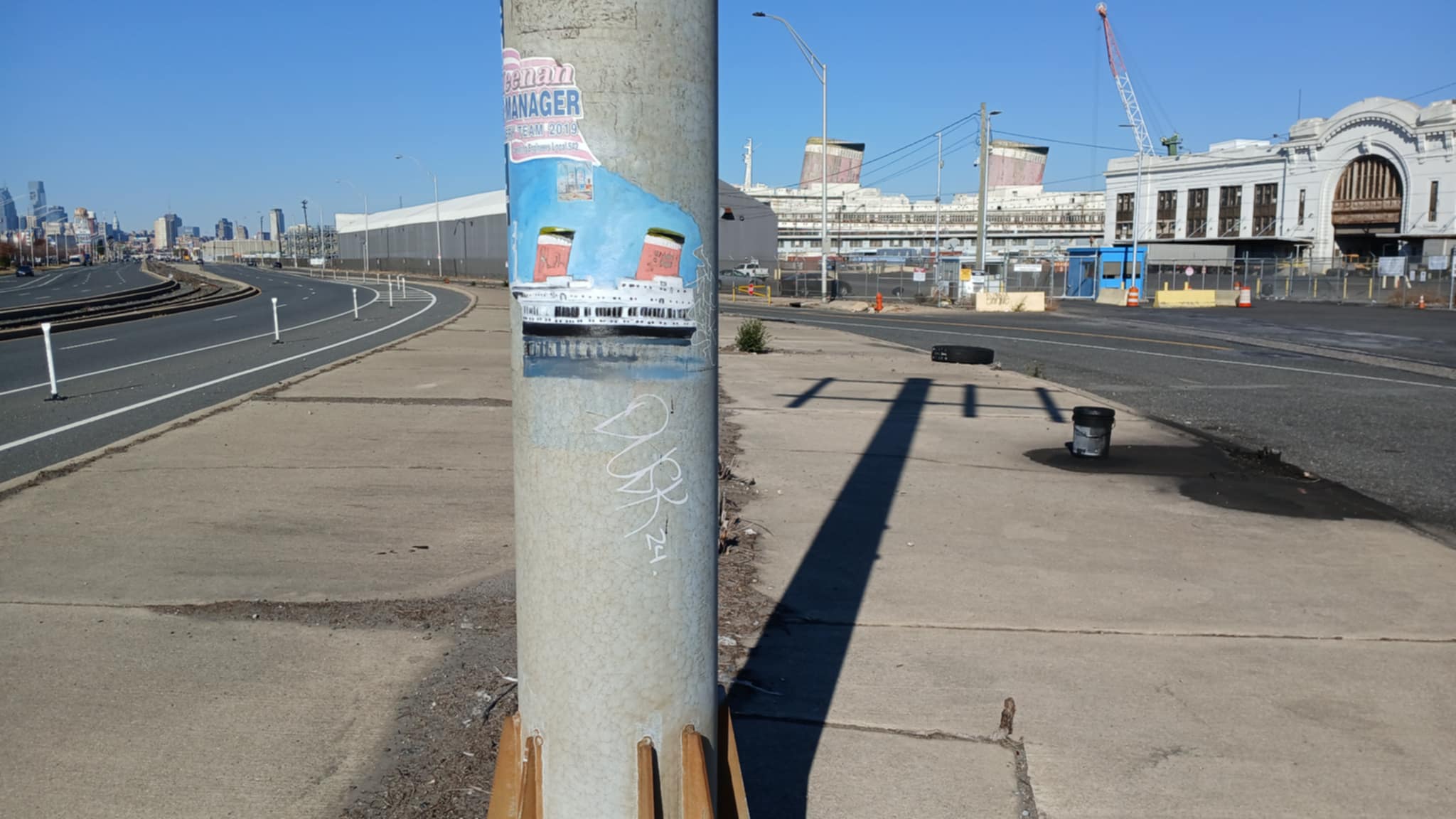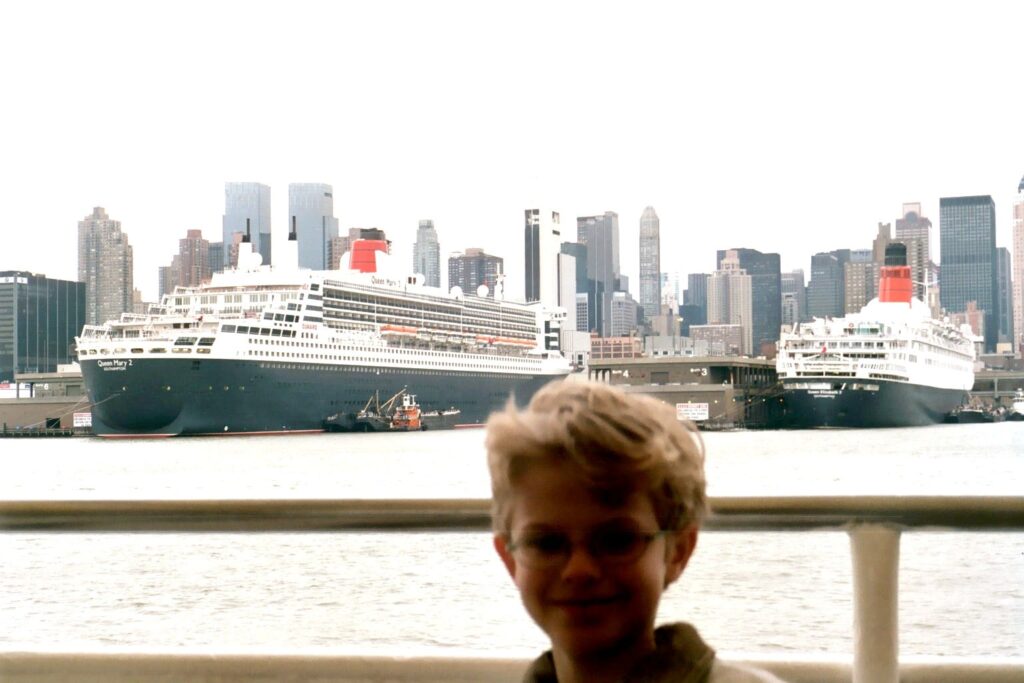
I first became interested in ocean liners when I was around 9 years old. Before air travel, the best way to travel was on an ocean liner. However, the world’s most famous ocean liner was a spectacular failure. Everyone knows the story of the Titanic because it failed. The Titanic’s designer prioritized decoration over functionality, resulting in over 1500 deaths. The Titanic’s designers thought lifeboats were ugly, so decided not to put enough on board. The Titanic’s watertight compartments did not extend high enough to prevent the ship from flooding. On her very first voyage, the Titanic sunk in a colosal catastrophe which remains well known to this day.Would a ship that did not make these same mistakes gain the same notariaty and attention?
40 years after the Titanic, a great ship was created which learned from the errors of the past. The SS United States, designed by William Francis Gibbs, prioritized functionally over all else. Constructed entirely of aluminum and steel, the ship was completely fireproof. The watertight compartments were more than ample to prevent flooding. There were double the amount of lifeboats as the maximum passenger capacity, because in case she were to capsize, one side’s lifeboats could become unusable. Had the SS United States struck the same iceberg as the Titanic, she could have continued her voyage to New York with only a small scratch, and many lives would have been spared.
The Titanic did not even complete a single voyage. By comparison, the SS United States crossed the ocean over 400 times between 1952 and 1969. On her first voyage, the SS United States smashed the world’s speed record for ocean liners, crossing from America to Europe in less than four days. She was a colossal success. She was the fastest and safest ocean liner ever to exist, transporting countless celebrities, artists, and politicians, as well as holiday goers and immigrants hoping to start a new life on a new continent. Even the Mona Lisa was transported aboard this magnificent ship.
By 1969, Ocean Liners were all but obsolete. A victim of the changing times, the SS United States was decommissioned and left abandoned. In 1984, the furniture was sold off in the largest auction in history. In 1992, the ship was towed to Svestapol, Ukraine, where she was stripped of her interior to remove asbestos. By 1996, when I was one year old, she arrived in my hometown of Philadelphia as an empty shell. The SS United States was docked in a private pier, closed off from the public. Forgotten and abandoned, she’s been left to the elements for the past 28 years, as more and more paint peels off and more rust grows.
Despite this, she remains structurally sound. Philadelphian people are proud to have such a historic ship in our city. Her presence is striking. Since our only coastline is on the Delaware River, it is strange and interesting to have such a large ship. She can be seen from many different vantage points and has become a part of our skyline. When driving down certain streets, you can catch a glimpse of a massive smokestack or two peeking out between buildings.
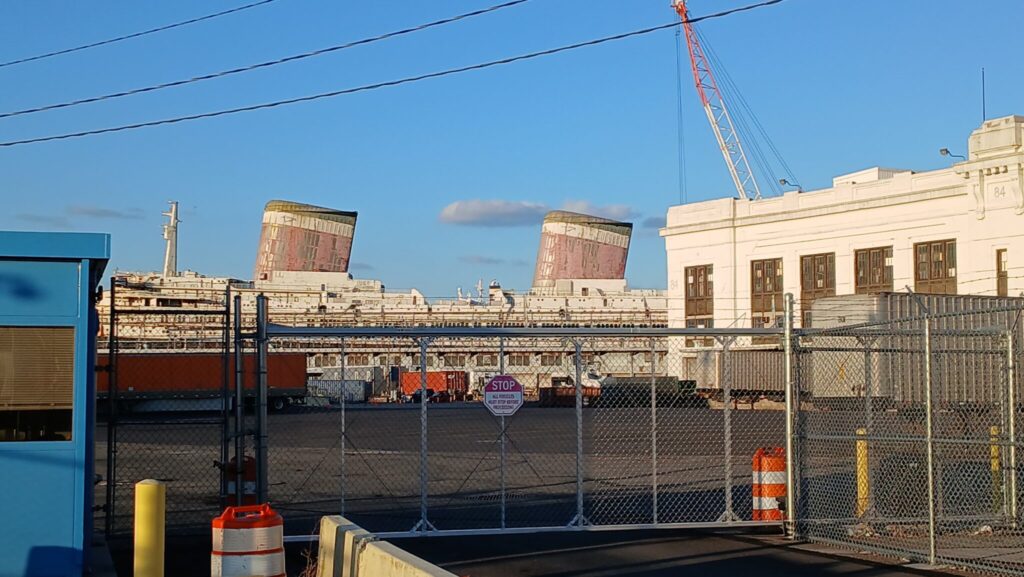
The love Philadelphia’s citizens have for the ship has unfortunately not spared her of difficulties. She sits on private property owned by Penn Warehousing. The general public can not get inside a secure fence which surrounds the ship.
In 2024, Penn Warehousing signed the ship’s death warrant–doubling the rental fee for the port where she sits. The conservation organization responsible for taking care of the ship was left scrambling to find a new home, a difficult task for a 300 meter long, non functional ship. Nobody with the space and funds stepped forward to save the ship, so the decision was made to tow her to Florida to create an artificial reef. This decision has deeply saddened boat enthusiasts and the Philadelphia community alike. The ship has remained in Philadelphia on borrowed time this year.
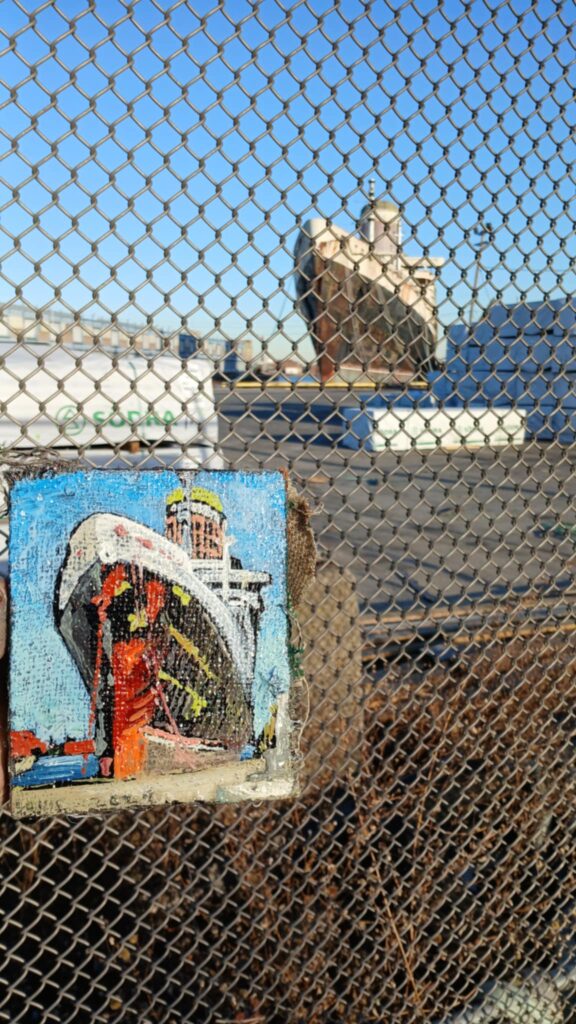
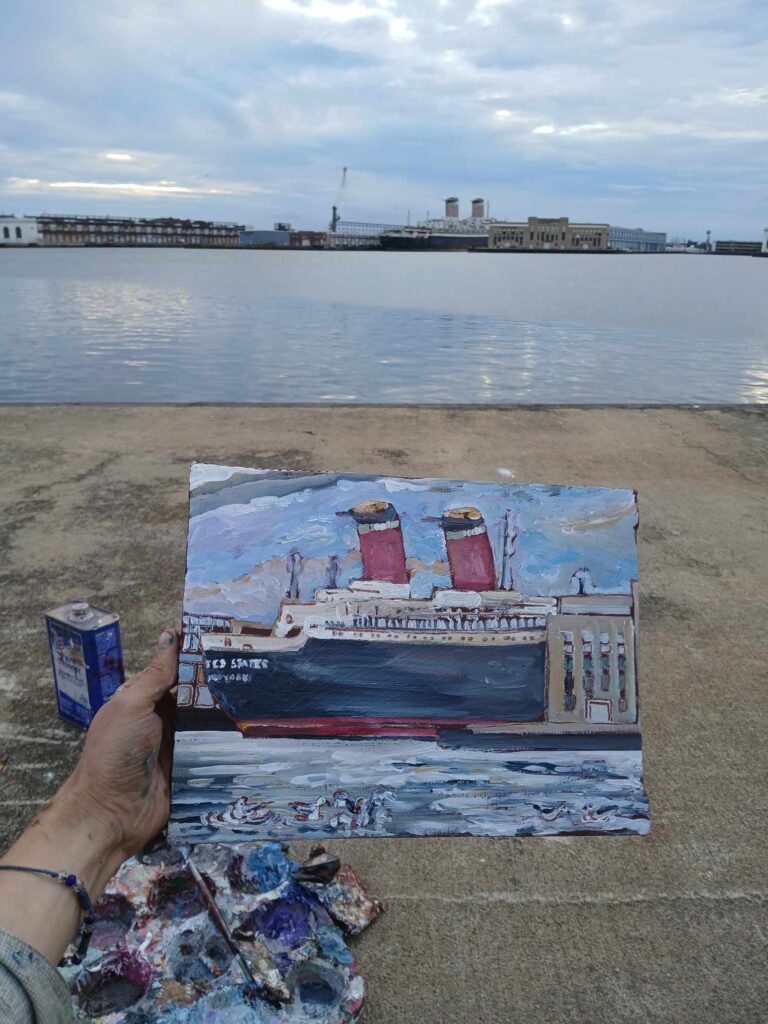
These recent events have deeply saddened me. I have therefore decided to memorialize the ship by painting it from as many angles as possible. This has proven to be something of a challenge, as a secure fence surrounds the ship. Sometimes, piles of lumber are placed in front of the ship, which further obstructs the view. The area where the ship sits is not one of our prettiest neighborhoods. On a large boulevard, it is not so pedestrian friendly. The sidewalks are filled with garbage. Across the street is a strip mall. None of this is enough to deter me from painting there. Even if I have to sit in a pile of garbage, it is the only way I can memorialize my beloved ship. Years from now, the ship will be gone, but my paintings will remain.

One day, I invited my mother to paint the ship with me. As we sat on the side of the boulevard, surrounded by garbage, a black Jeep pulled up and the driver asked what we were doing. We were worried that the police were there to ask us to leave. Instead, the driver turned out to be the ship’s caretaker. He invited my mother and me aboard the ship in order to paint inside. It was a dream come true.
Even seeing the ship up close was a profound experience, since we are so used to being stuck behind the fence. From a close distance, you can really see the ship’s enormity. No machine has ever existed like it, nor ever will again.
Inside the ship, it is a dark maze of rusty metal and chipping paint. What was once an elegant first class lounge, hosting presidents and celebrities, is now stripped down to the bare metal support beams. It’s easy to see the liability the owners would face if tours were offered. Hanging wires, opened elevator shafts, and empty pools are among the many hazards inside. Despite this, you can really feel the history inside. The ship itself has a soul. I made about 10 paintings that day.
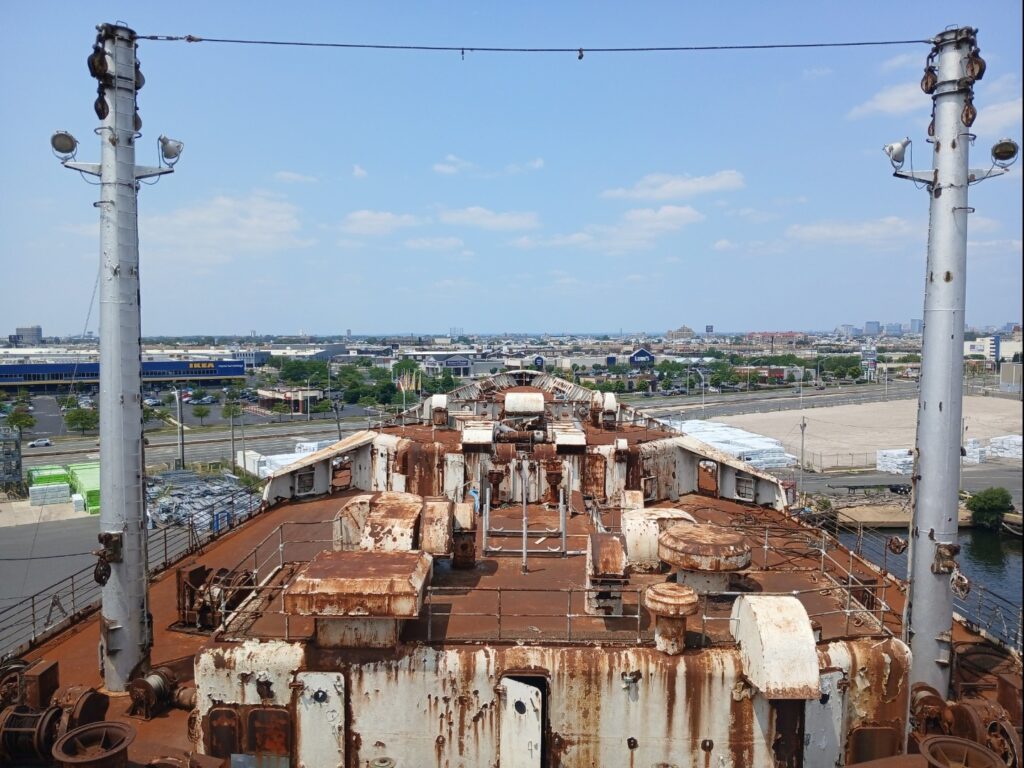
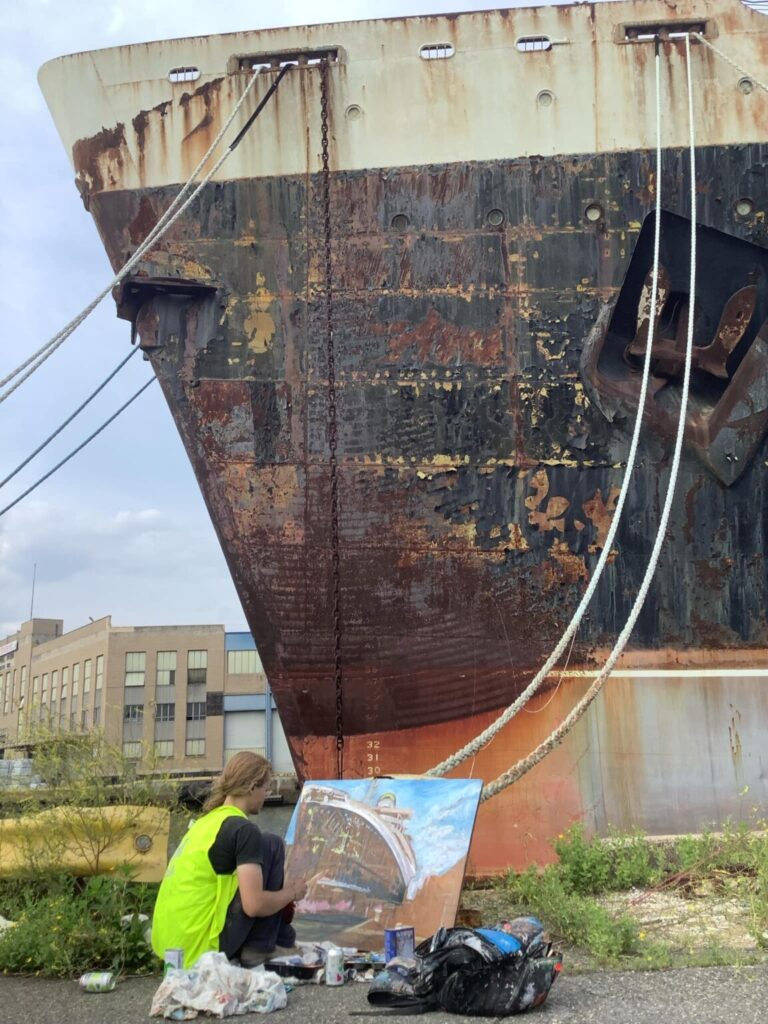
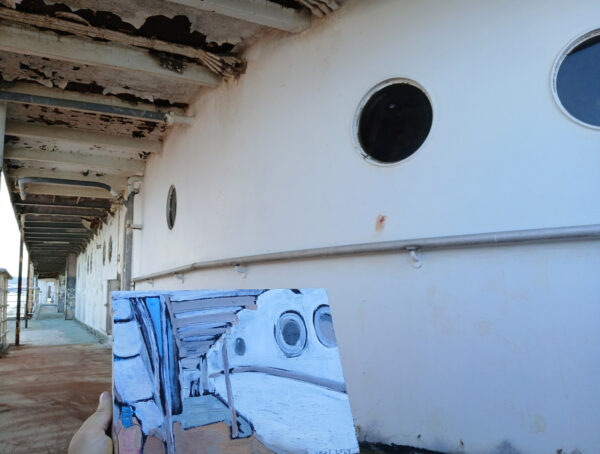
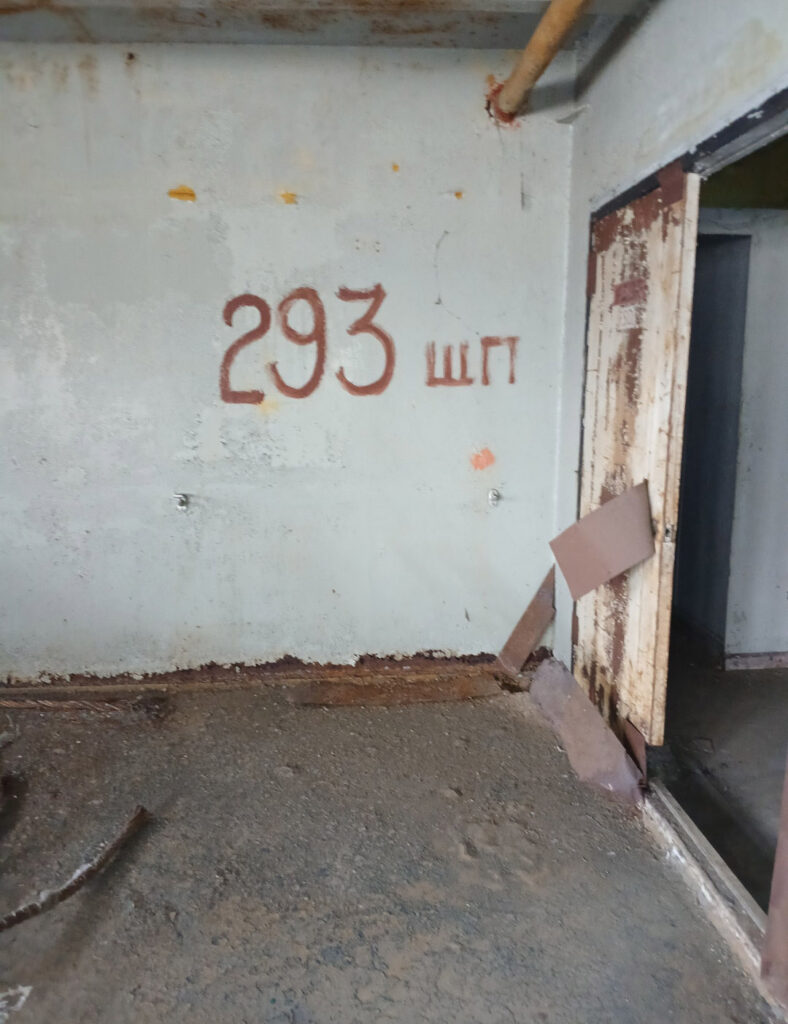
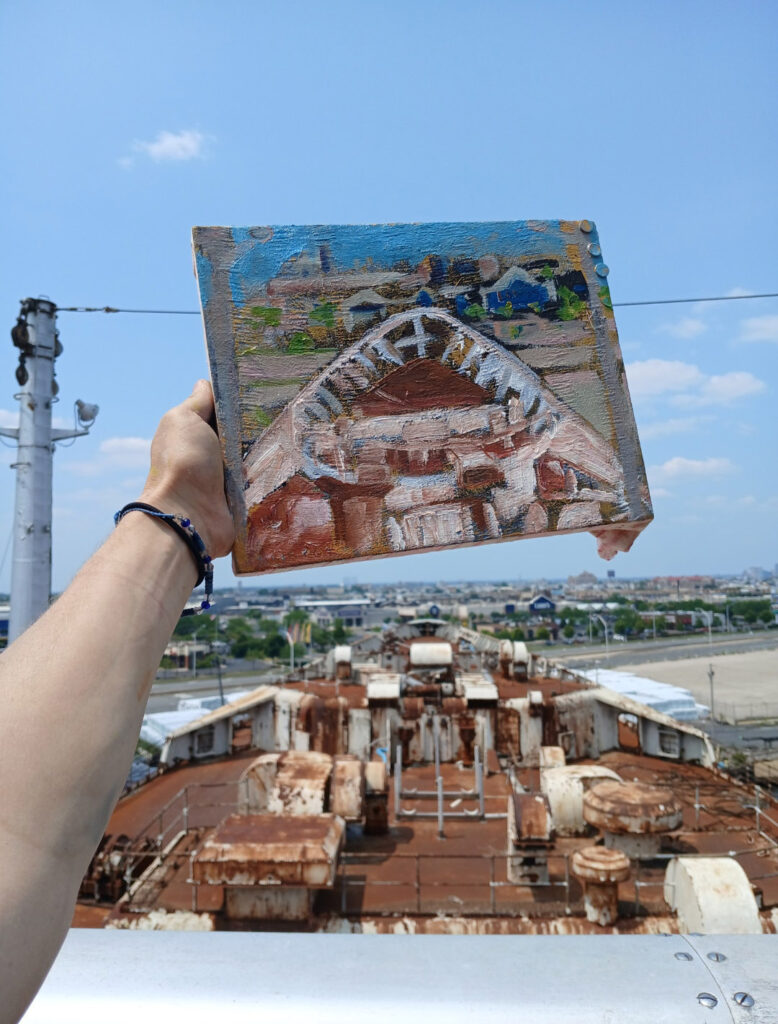
On 14 September 2024, the ship was scheduled to be towed away. I arrived on the morning of the 13th and painted all day. In the evening, I was met with a wonderful surprise–a group of about 15 artists had met at the ship to memorialize her one last time. The group’s organizer, Kelly Micca, has been painting the ship regularly, just like me. Some of the painting group members stayed until 2:00 or 3:00 in the morning, while some planned to return at sunrise to see the ship’s departure. I decided to sleep in my car, in the parking lot of a fast food restaurant, in order to spend some final hours looking at the ship.
I hadn’t slept well. My face was covered in paint, and my hair was a mess. In the morning, I started another painting. Some television crews were there and noticed me. I was interviewed on four news channels after having slept in my car in a Wendy’s parking lot.
I learned from the news crews that the ship’s departure was once again delayed indefinitely. The coast guard had ruled that the ship needed further inspection in order to depart it’s current dock, as it may not be seaworthy, which could create hazardous conditions for other boats, bridges, coastal communities, and sea life.
Kelly and I have used this extra time to memorize the ship to the public by painting the ship as graffiti on poles and sidewalks in the area. People can see that something beautiful was there.
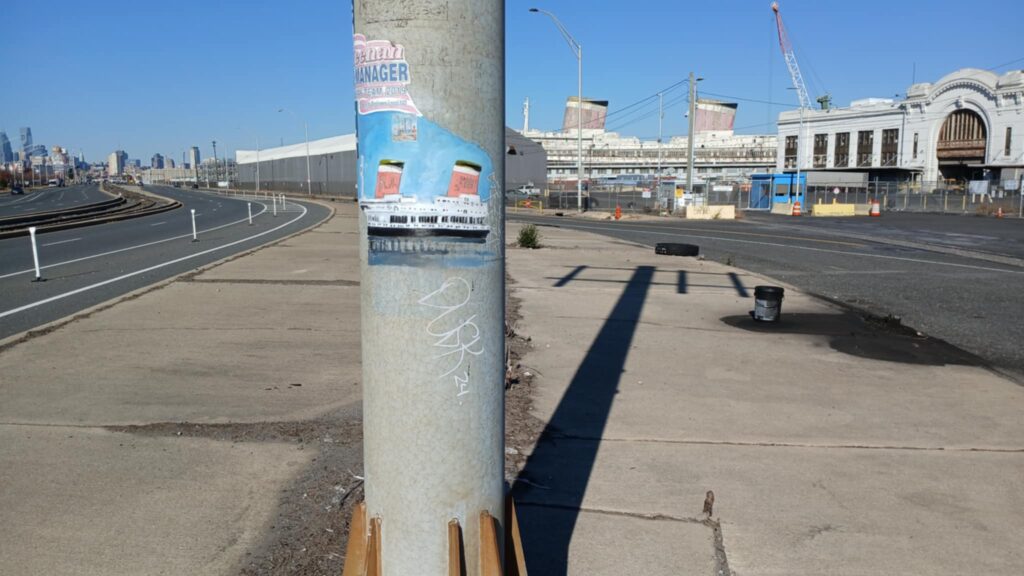
Though I am happy that the ship’s departure has been delayed, I also had some other plans in life, such as traveling back to Mexico and Japan. Since the date is continuously delayed, I could not keep waiting indefinitely. I arrived in Japan in December 2024 in order to participate in some art exhibitions.
I could not resist visiting Japan’s ocean liner, the NYK Hikawamaru in Yokohama. Visiting the Hikawamaru has filled me with mixed emotions. I am very happy to see a historic ship preserved in museum condition, getting the love, care, and maintenance it deserves. However, I am saddened to see what could be. If America valued it’s history as much as Japan, our ship would be preserved as well. The fact that we treat such a historic ship as though it were garbage, while the Hikawamaru is a museum opened to the public, speaks volumes about the cultural differences between the United States and Japan.
The SS United States is still scheduled to be sunk in Florida, though a date has not been set. If one is announced while I am in Japan, I plan to rush home to say my goodbyes. I feel like I am losing a friend.
I plan to follow the ship by car, down the east coast of America, around the Florida peninsula, and to Mobile, Alabama. There, the ship will be stripped of any remaining toxins in preparation to be sunk. Her iconic smokestacks will be removed. It will be a sad day in history.
(Writtened by Louis Lafferty, Artist)
